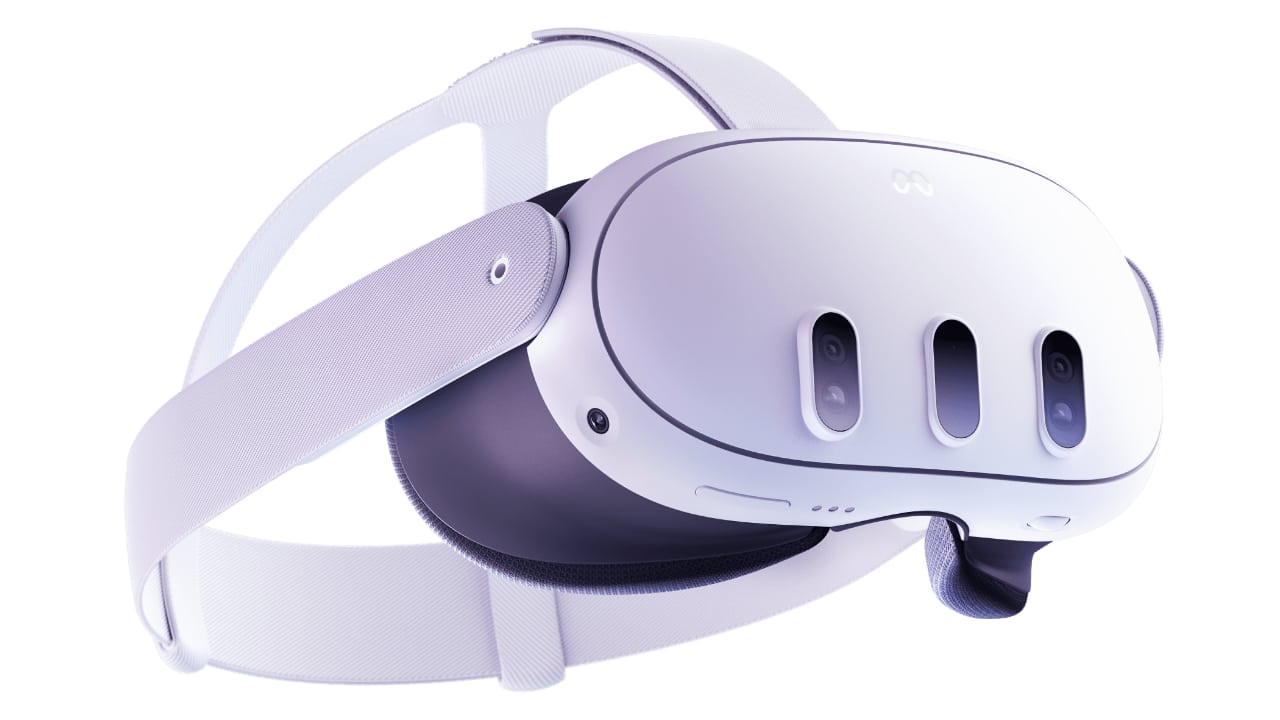
Meta Quest 3 hits shelves October 10, and pre-orders are open now with pricing starting at $499 for the 128GB version and $649.99 for the 512GB. Is it too little too late?
Okay, let’s get the basics out of the way first. Meta Quest 3 is definitely more capable than the Quest 2, which is unsurprising when you consider that it came out in its original guise of the Oculus Quest 2 back in October 2020.
It should be, too, as it's definitely piled on some dollars in the intervening years. The Quest 2 started at $299, albeit for a very underspecced 64GB, and peaked at $399 for a 256GB version. The Meta Quest 3 has a new entry-level pricing starting at $499 for the 128GB version and rising to $649.99 for the 512GB.
Luckily, the storage is not the only thing bumped up. Quest 3 is the world’s first device to feature the new Snapdragon XR2 Gen 2 platform that Meta helped develop in collaboration with Qualcomm Technologies, and the company claims a number of performance benchmarks.
The unit’s 4K+ Infinite Display achieves a nearly 30% leap in resolution compared to Meta Quest 2. You get 25 pixels per degree and 2064×2208 pixels per eye for the best resolution across the entire Quest line. The next-gen pancake lens optical stack gives Quest 3 a 40% slimmer optic profile compared to Quest 2 without compromising the depth of visual immersion. And high-fidelity, full-color Passthrough keeps users’ physical surroundings in sight with over ten times more pixels than Meta Quest 2. The Quest 3 also sports 8GB of RAM, up from the 6GB of the Quest 2 (but down from the 12GB on the 2022 $1500 Quest Pro).
Sure, it weighs a bit more, but 12g (515g compared to 503g) is hardly a deal breaker. The question is, who wants it?
Underachiever
Meta says plenty of people and has proudly pointed out that its Quest store games and apps have raked in over $2bn in lifetime revenue. However, its Reality Labs division, which encompasses all things metaverse, has been known to lose that much in a single quarter — and more than once. It’s also only $500m more than its announced revenues of $1.5bn this time last year; less of a launch ramp and more of a plateau.
A report from earlier this year suggested that only 6 million users were booting up their Quests in October 2022 from an installed base thought to be over 20 million. By comparison, Sony had 149 million PlayStation 4 & 5s in the field and 112 million active users in the same period. That’s a difference of 30% using their headsets versus 75% using their consoles.
Indeed, Arstechnica has run some analysis suggesting that the closest comparison to the Quest headsets in terms of their ability to drive software sales is Nintendo’s spectacular misfire of the Wii U.
If that is the case, Meta can take some comfort from all that. After all, the Wii-U was followed by the spectacularly performing Nintendo Switch, and maybe the Quest 3 can follow in its footsteps. However, at least the Wii-U was proceeded by the Wii, the seventh best-selling console ever. Meta has no such mass-market track record to point to.
Perhaps it's notable that Zuckerberg’s introduction to the Quest 3 majored on mixed reality rather than the total immersion fantasies of previous years. Quest 3 will be "the first mainstream mixed reality headset," allowing you to "blend the physical and digital worlds together,” he says. And from Augments to Avatars, Meta is looking to populate virtual spaces with more AI-driven people, objects, and interaction than ever before, which is perhaps just what they need to do. Because in terms of real users, the metaverse still looks like it is still more empty space than not.
Tags: Technology The Metaverse


Comments